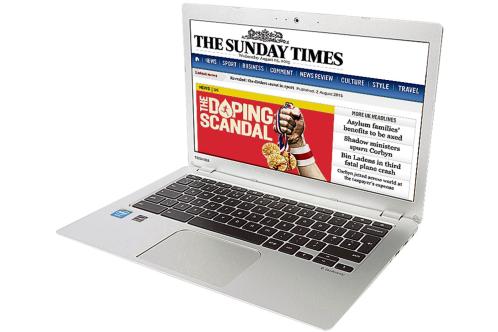
There’s a Chrome for every home as laptop makers get the Google bug
Macs and PCs have a new rival in go-anywhere computers. We take a shine to five Chromebooks
Toshiba Chromebook 2 CB30-B-104, £270
Best for Value
Squint and you might mistake this laptop for a MacBook Air: the off-white plastic body looks remarkably like brushed aluminium. The Toshiba is a handsome-looking Chromebook, the 1.35kg chassis is sturdy and Toshiba has squeezed in all the essentials: the keyboard feels crisp and responsive and the large, buttonless trackpad works well too. Inside is a 16GB solid-state drive (SSD) and an Intel Celeron processor with a generous 4GB of Ram, so performance is sprightly. There is a cheaper B-103 model (£190) but our choice would be this version with a 1080p 13.3in screen: it delivers pin-sharp images with great viewing angles and is on a par with those of PCs costing twice as much. The laptop also supports the latest wi-fi and has a fast USB 3.0 port, an SD card reader and seven hours of battery life.
Verdict Good looks and performance, and a gorgeous screen.
★★★★★ toshiba.co.uk
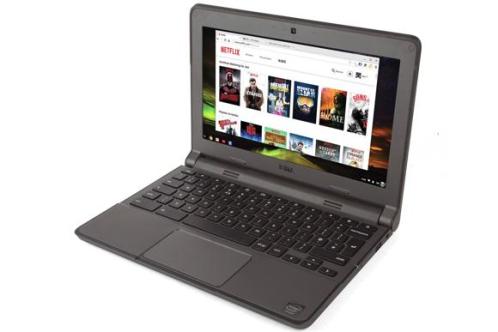
Dell Chromebook 11, £214
Best for Students
Cast in dull grey and black, Dell’s Chromebook 11 is no looker. But what it lacks in allure it makes up in practicality: the tough, 1.2kg body is bolstered with rubber edges, making it robust enough for a tough working life. The spec is also up to scratch: speedy wi-fi capability; an SD card reader to supplement the 16GB of storage; and an easy-to-use keyboard, even if the buttonless trackpad is a little fiddly. The Dell delivers 7½ hours of battery life, but the 11.6in display is disappointing — images wash out when you tilt it back. Forgive that flaw, though, and there’s much to love.
Verdict Tough, practical and portable. The display is a letdown, though.
★★★★☆ dell.co.uk
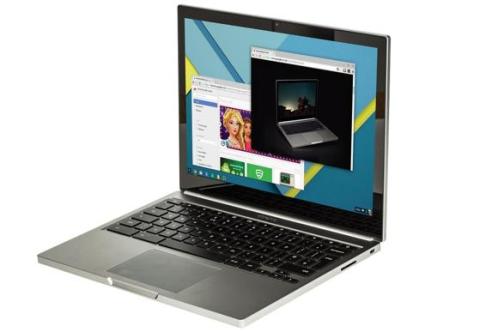
Chromebook Pixel, £799
Best for Showing off
Google’s own version of a Chromebook is designed to show off just what the system can do. None of the plastics used by rivals here: the 1.5kg Pixel is a metal machine and is peppered with high-end hardware and nifty features. Tap the lid twice and multicoloured LEDs glow to indicate the remaining battery power, the superb keyboard has touch-activated backlighting and the glass trackpad is the best on test. This standard model has a powerful Intel Core i5 processor, 8GB of Ram and a 32GB SSD; a £999 model ups the ante with a Core i7 chip, 16GB of Ram and a 64GB SSD. Whichever you choose, the Pixel’s 12.9in touchscreen is the match of any on the market: it’s bright, and colours are accurate. With 11 hours of battery life and the graphical grunt to show 4K on a compatible TV or monitor, the Pixel is the ultimate in Chromebook one-upmanship. But the price is a big turn-off.
Verdict Stunning design and an amazing display — at a price.
★★★☆☆ store.google.com
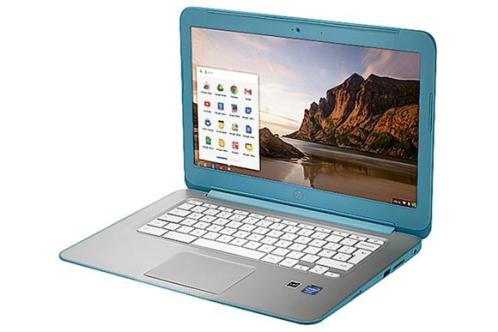
HP Chromebook 14, £249
Best for Connections
While others in this line-up settle for a monochromatic look, HP’s device wraps an attention-seeking turquoise or green band around the base and lid, and the keyboard is surrounded by metallic silver. The 14in display brings a weight penalty — the HP is an unwieldy 1.7kg — but the spacious keyboard layout and big trackpad are a pleasure to work on. The big difference, however, is the hardware inside. HP has opted for Nvidia’s Tegra K1 processor, and that’s no bad thing: battery life approaches the nine-hour mark, performance is nippy and, like the Toshiba, it needs no fan, so it’s silent. You can also use the HP outside wi-fi networks: built-in mobile broadband via a pre-installed Sim is good for 250MB a month for two years, with a 500MB add-on at £6 a month.
Verdict Built-in 3G makes for an always-connected laptop.
★★★★☆ store.hp.com
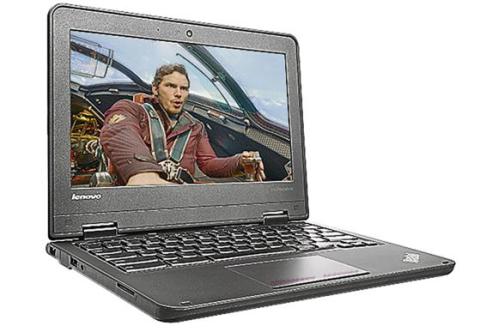
Lenovo ThinkPad Yoga 11e Chromebook, £330
Best for Business
Lenovo’s ThinkPads are popular with business people because of their bulletproof build. The “Yoga” label refers to the machine’s flexibility: the 11.6in touchscreen folds back through 360 degrees, allowing the Lenovo to transform from laptop to tablet, or you can make it into a tent shape for watching movies, say. The quad-core processor powers past most of its rivals, the touchscreen delivers cracking images and the keyboard is excellent. Unusually, the latest wi-fi compatibility is accompanied by an old-school Ethernet socket.
Verdict A little pricier than most, but you get what you pay for.
★★★★★ lenovo.com/uk/en
Buyer’s guide
What is a Chromebook?
PCs run Windows; Macs run OS X; this breed of low-cost laptops is powered by Google’s operating system, Chrome OS. This keeps manufacturing costs down because the system is simple and efficient so it doesn’t need high-end hardware to work well (and start up in seconds). And because Chromebooks largely rely on web space, they don’t require much built-in storage (still an expensive component of computers); in most cases they make do with as little as 16GB. Chrome OS is easy to get to grips with, having a familiar-looking desktop and apps. This is sleight of hand: in fact all the programs are being run by a version of Google’s Chrome browser.
So where do I store my files?
In the cloud. Every Chromebook comes with 100GB of Google Drive storage for two years, apart from the Pixel, which comes with 10 times that — 1 terabyte (TB), for three years. With all documents, photos, music and videos saved online, even if your Chromebook is lost or stolen, your data can still be retrieved on any internet-connected device — phones and tablets included. Once the free storage period expires, you must pay a subscription to upload any more files: 100GB costs about £1.50 a month and 1TB costs about £8 a month.
Can they replace a PC?
Most people’s computing — internet browsing, email, word processing, spreadsheets, photo-editing and so on — can be done on Google apps such as Docs, Drive and Photos. There are also many third-party programs on the Chrome Web Store, ranging from all-singing, all-dancing office suites to games.
Do I always need to be online?
No. Chrome OS has improved a lot since its 2011 launch, and you can now edit files when you’re away from a wi-fi connection and resync them with their cloud backups once back online.
